Living shorelines to the rescue
As Tropical Storm Debby blew itself into a Cat 1 hurricane on its way toward the Florida Panhandle Aug. 5, Franklin and Gulf county residents braced for the worst.
Fears of waking up to see a main transportation artery, U.S. Highway 98, chopped to pieces in precisely the same places where such storms as Kate (1985); Opal (1995); Dennis (2005); and Michael (2018) wrecked the shoreline were palpable.
Luckily, Debby veered eastward and spared the Forgotten Coast, slamming Steinhatchee, still recovering from a head-on encounter with Hurricane Idalia only 11 months before. Instead of being a broken, jumbled mess, U.S. 98 quickly became a conduit for fleets of rescue vehicles headed toward stricken Taylor County, only a hundred miles away.
Over the decades of watching both big and moderate-sized storms threaten or severely damage Highway 98, county and state planners have largely resigned themselves to accepting the stark realities of life on a two-lane, major coastal highway that in places lies only yards from the surf. Proposals to rebuild the road inland once floated briefly until the projected, staggering costs of such a project shot them all down.
Since 1985, destruction of Highway 98’s 55-mile run through Franklin County has cost state and federal taxpayers hundreds of millions of dollars to repair.
So, is the county doomed to see a future fraught with fears of keeping its primary highway functioning during and after heavy storms? Mother Nature would say that’s a rock-solid certainty, but a group of environmental engineers who started a project near Eastpoint in 2020 say that what they’re doing can make a significant difference in how Highway 98 rides out the nasty storms of tomorrow.
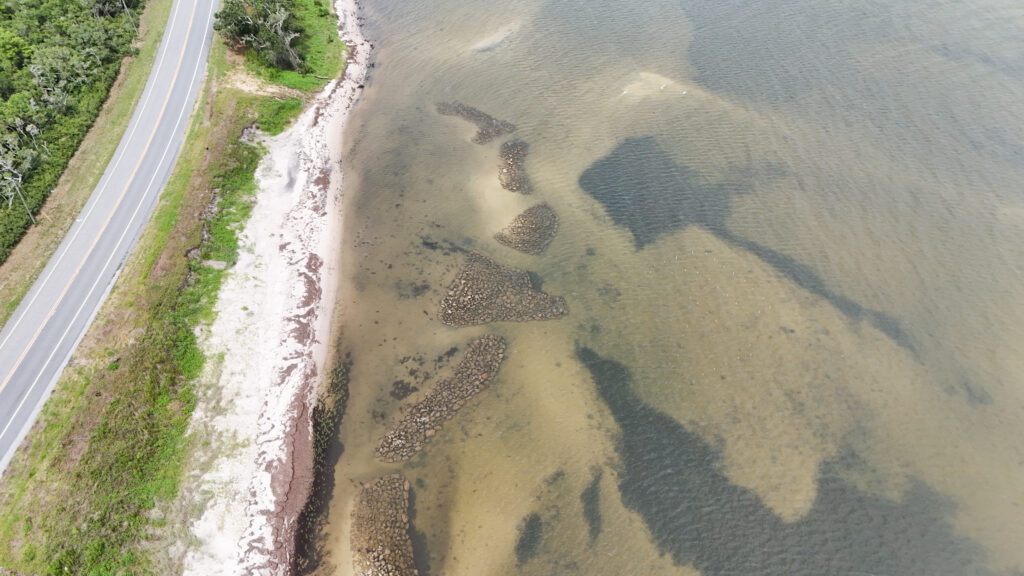
A natural solution?
Evan Blythe serves as senior project manager for what is known as the “living shoreline” project for Franklin County. He, along with Josh Adams, an environmental planner, lead the effort coordinated by the Tallahassee-based Apalachee Regional Planning Council. The non-profit ARPC, one of 10 regional planning councils in Florida, provides nine counties in the Big Bend region with technical help on quality-of-life projects that range from economic development initiatives to installations aimed at enhancing natural environments.
“Right now, this is the largest living shoreline project in the state,” Blythe said. “But we’re not sure how long that will last, because these projects are really taking off around the Gulf.”
The term “living shoreline” describes a method of using natural, primarily locally sourced materials to create infrastructure right in the surf zones of various water bodies, from bays to inland waterways. Blythe said these man-made zones are designed to do mainly two things – reduce the impact of erosion from storms and create an attractive habitat for a host of marine organisms, from oysters to fish.
In the wake of Hurricane Michael, Blythe, Adams and their ARPC team walked the shoreline where Highway 98 lay in tatters and came up with a proposal based on what they saw.
“We saw the damage and realized that there was a great need for a living shoreline project between Eastpoint and Carrabelle,” Blythe said. “This is an ideal place for a project like this.”
The ARPC quickly put together a grant proposal to the National Fish and Wildlife Foundation and in 2020 the proposal was approved to the tune of $14.5 million. Soon after work began in October 2023, motorists just a few miles east of Eastpoint began seeing what had long been a barren, featureless beach suddenly start taking on a rocky profile.
The Apalachicola National Estuarine Research Reserve has served as a partner on the project since its inception, providing permitting support, space and expertise for the spartina nursery and they offer trainings for local property owners about living shorelines. “They have been monumental to our success,” said Blythe.
With the first phase of the project now nearing completion, Highway 98 now has an artificial reef complex that stretches nearly a mile from Eastpoint’s breakwaters to Yents Bayou. Originally, ARPC’s plan for the area called for a total build-out of 20 acres of reef and 30 acres of new marshland along a six-mile stretch. Reaching that goal likely will require two more phases of construction that could extend into 2026, Blythe said.
Mimicking Mother Nature
Building artificial reefs offshore in the Gulf is a familiar, and welcomed, concept to Panhandle residents, especially those who love to fish for such popular species as red snapper, grouper and amberjack. But building them onshore, directly in the surf zone on bay beaches, leaves some people scratching their heads, Blythe said.
The dynamics of manmade living shorelines, however, are similar to those that make offshore artificial reefs so effective, particularly in their ability to become permanent habitats for an assortment of marine organisms. Blythe and his partners began to see oysters and blue crabs, for example, settling in on their new “rock islands” within weeks of starting construction.
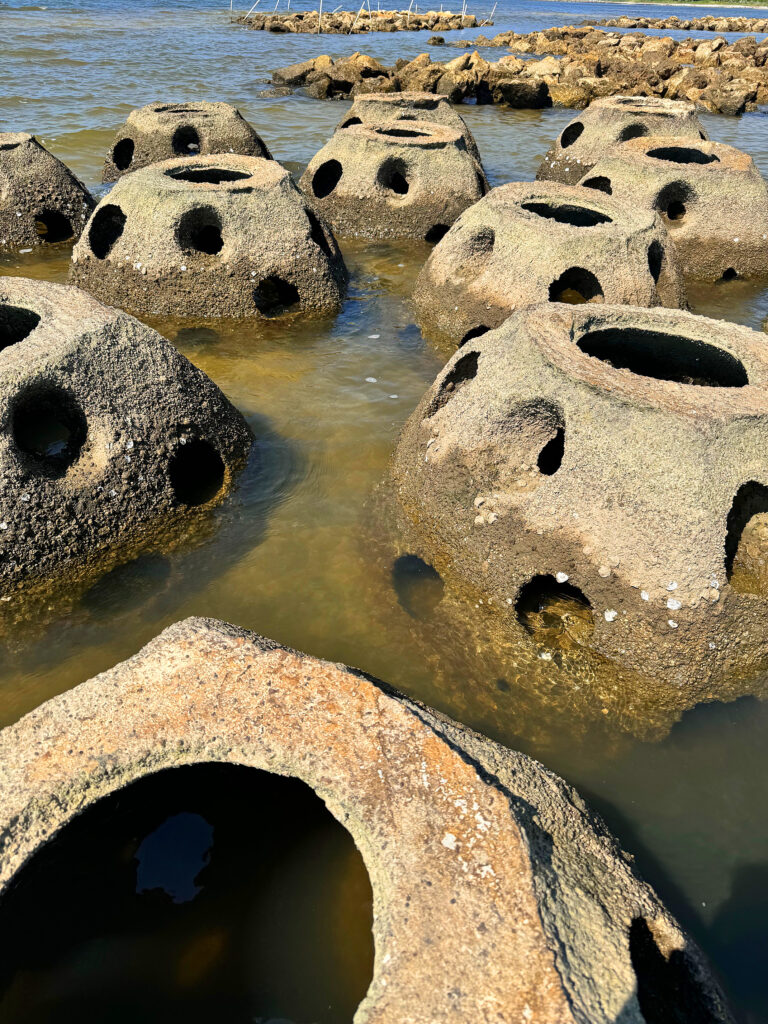
But aside from creating homes for marine critters, one of the most promising aspects of living shorelines is their capacity for creating zones where seagrasses can grow and thrive, Blythe said. Strategically placed rocks in the shallows work to sap the energy of incoming waves, which otherwise can make vast stretches of shoreline virtually incapable of holding most varieties of marine vegetation which require fairly calm water to put down roots.
“It’s extremely important to build living shorelines that can support the planting of marine grasses,” Blythe said. “This is one of the most important things we try to do.”
By planting grass adjacent rock emplacements, the ARPC hopes to mimic what natural marshlands do, which is to trap sediment and create habitats for shrimp and larval marine organisms. Trapping sand and mud that constantly sweeps down shorelines from natural erosion and storm surges is a primary job of the rocks, but once established, grasses can help catch beach-building material too. Combined, the grass and the rocks thus help stabilize, even build up beaches and blunt the worst impacts of storms, Blythe said.
A community-based effort
In describing ARPC’s approach to the work in Apalachicola Bay, Blythe painted a picture of genuine community involvement. Aside from getting local government support – which readily came once county commissioners learned the project wouldn’t cost the county a dime – from the outset a chief goal was to rely on local people and resources as much as possible.
“Almost all of the people involved in this project live within 30 miles of Eastpoint,” Blythe said. “That includes two construction companies and a great nonprofit group of young people as well.”
North Florida Construction Company, based in Clarksville near Blountstown, won ARPC’s contract to literally do the heavy lifting, using their barges, cranes and other heavy equipment. A narrow stretch of beach in Eastpoint became the project’s staging area, from where tons of natural limestone, quarried from a site near Marianna, would be barged out to specific sites.
North Florida subcontracted with Eastpoint’s Coastline Clearing and Development Company to handle highway safety issues along with other shoreline tasks. All of this construction demanded careful attention to tides, not always an easy prospect. Loaded barges must have enough water to reach sites, yet low tides give workers and heavy equipment operators their best chances to operate.
Blythe said that his team gets seagrass plantings from the Conservation Corps, an arm of Franklin’s Promise Coalition, a nonprofit local community service league founded in 2003. The corps gives young people opportunities to help the community through various conservation projects.
The coalition relies on a large seagrass nursery on property managed by Duke Energy in Crystal River. ARPC contracts with the group to supply their preferred plant, saltmarsh cordgrass, biologically named Spartina alterniflora. The native plant is a dominant salty species in Florida’s roughly 500 million acres of marshland. Naturally, the grass typically grows at waters’ edge, and as such is regarded by biologists as being a first line of defense against heavy seas.
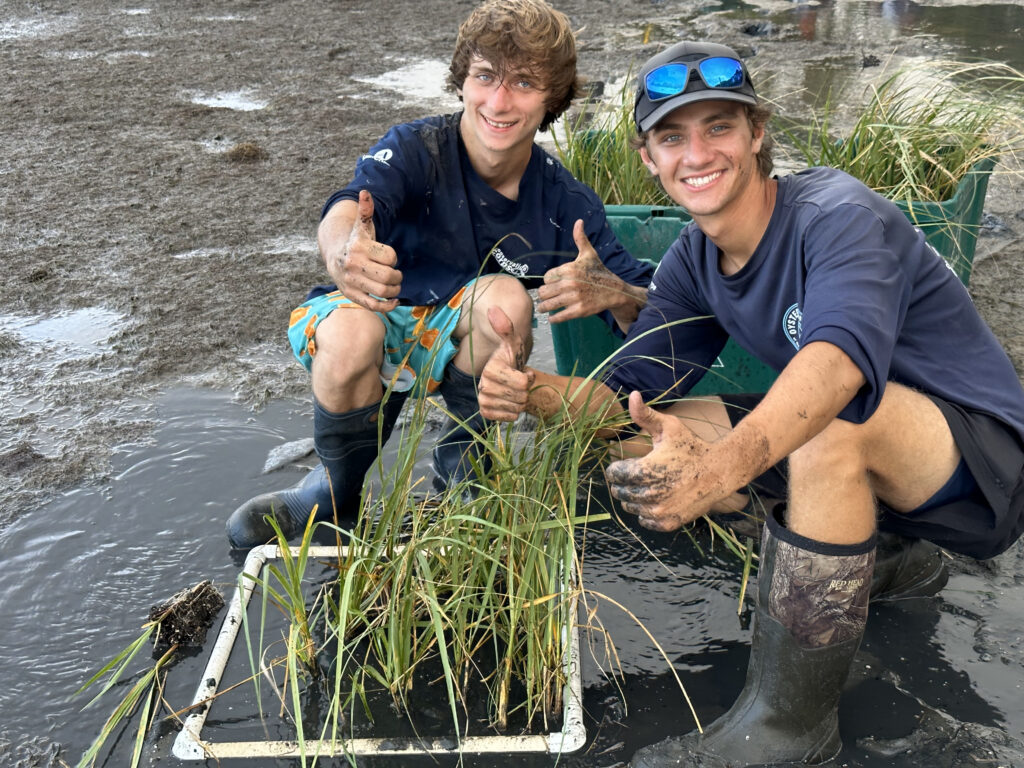
Finding the right mix of places and people
The first phase of the project targeted a stretch of uninhabited beachfront where Highway 98 has been pounded to pieces in recent years. Well in advance of construction, the ARPC team gathered extensive data on the site, including an analysis of tide patterns, sediment transport, wave energy and the prevalence of nearby seagrass.
Next came the design phase. As even a casual glance at the completed installations easily shows, the project starkly contrasts with many artificial reef projects, where material often is dumped haphazardly as opposed to being strategically placed. ARPC used computer-aided design techniques to create a palette of limestone features imitating natural reefs, plus incorporating pass-throughs for small boats and waders. The result is an inviting, eye-catching oasis for new life and beach renourishment at the same time.
Beyond the physical, oceanographic criteria that ARPC used to start the project, the agency was obliged to get permits from the state for use of public lands, which is where all construction in Phase 1 now lies. For Phase 2, construction will extend to private property but only with the expressed consent, in writing, of property owners, Blythe said.
Once they grasp the living shoreline concept, most property owners Blythe has dealt with support the ARPC’s plans and are enthusiastic about what the project may mean for the long-term protection of their beachfront. Some owners, however, have expressed concern over eminent domain issues which the ARPC team was prepared to deal with from the outset.
“We’ve let all parties know that this is strictly a voluntary project,” Blythe said. “Only those (beachfront property owners) who have told us they support this project are the ones who we’ll be working with. Eminent domain has never been an option. Our (NFWF) grant doesn’t allow it and frankly, we wouldn’t use it if it did.”
Already, property owners east of Yents Bayou are signing consent forms hoping that eventually ARPC will have the resources they’ll need to extend construction their way. Near Smith Beach, longtime property owner Capt. Wayne Todd is one example. Todd and his family enjoyed a vacation house there for more than six decades. Hurricane Dennis in July 2005 not only destroyed his house but also swept roughly 50 beachfront yards of sand away as well. Since then, he’s watched what’s left of his beach shrink with every passing thunderstorm.
“This is a terrific idea, these living shorelines,” Todd said. “They have been proven to work in so many areas around the country and I am glad to see them coming here. As far as I’m concerned, they can’t build them fast enough.”
A natural, no-cost approach
What isn’t clear to many is what building these reefs cost taxpayers, Blythe said. Bottom line, thanks to a huge settlement by British Petroleum in the wake of the 2010 oil spill disaster, that cost is essentially zero. In 2013, BP agreed to release $2.54 billion to NFWF, funds earmarked to be used to support conservation projects throughout the northern Gulf. The $14.5 million grant to ARPC for the Apalachicola project came directly from that BP fund.
As it turns out, this money is helping to drive living shoreline projects around the Gulf perimeter. The Florida Sea Grant Program, based at the University of Florida, is a major promoter of living shorelines and even offers courses designed to teach community leaders how to build them. Nationally, the National Oceanographic and Atmospheric Administration (NOAA) reportedly has funded more than 150 living shoreline projects around the U.S. coast.
Blythe and his ARPC colleagues strongly believe living shorelines offer a sensible, rational and cost-effective line of defense against severe storms and rising sea levels. The sea facing Apalachicola is projected to rise six inches by 2074, according to NOAA’s most recent estimates.
“These reefs are not fix-all solutions,” Blythe said. “They’re not going to protect shorelines from huge storms. They’re mainly important for protecting the day-to-day chipping away (of shorelines) from normal surf action.”
Now that living shoreline construction is a growing national trend, Blythe said data is proving these shorelines generally offer a better solution than lining coastlines with hardened seawalls. Though popular, seawalls tend to transfer wave energy to the beachfront property of next-door neighbors, thereby exacerbating erosion, not to mention discord among coastal dwellers.
But Blythe acknowledges that sometimes, seawalls are necessary. Living shoreline technology is designed to embrace that fact, he said.
“You can integrate living shorelines with seawalls, absolutely. Based on experience we’ve seen these concepts work successfully and there’s no reason why they wouldn’t work in Apalachicola Bay.”
For more information about the living shoreline project in Apalachicola Bay, contact Evan Blythe at eblythe@arpc.org
Living shoreline, oyster reef restoration different projects
As Apalachicola’s living shoreline project, run by the Tallahassee-based Apalachee Regional Planning Commission, completes the first phase of construction, a separate, Apalachicola Bay Oyster Reef Restoration project, begun in 2015, is making strides as well.
A misconception that the two separate projects are somehow joined still confuses some, but in fact the projects are entirely different, although with complementary missions, said Evan Blythe, senior project manager for the ARPC’s living shorelines effort.
“While both projects look to improve the biodiversity of the fishery, the F98 (living shoreline) project consists exclusively of nearshore, low-profile reefs and saltmarsh cordgrass,” he said.
The bay’s oyster restoration project is now in its second phase, funded by a $20 million grant from the National Fish and Wildlife Foundation in 2019. Both projects use limestone as a foundational material for the proliferation of oysters and other forms of stationary marine organisms, but that’s where the similarity ends.
The ARPC project’s primary goal is to use manmade, artificial reefs made up of limestone and seagrasses to protect and enhance shoreline environments.
The oyster restoration project, funded in large part by monies allocated through the Florida Fish and Wildlife Conservation Commission. uses smaller (six- to 12-inch in diameter) limestone rocks for rebuilding historic oyster-producing grounds where once-robust populations of oysters thrived but are now degraded.
Despite their separate missions, the two projects complement each other, said Blythe. Both provide habitat for a variety of marine life, not just oysters, that enrich and help restore the overall natural biodiversity of the bay.

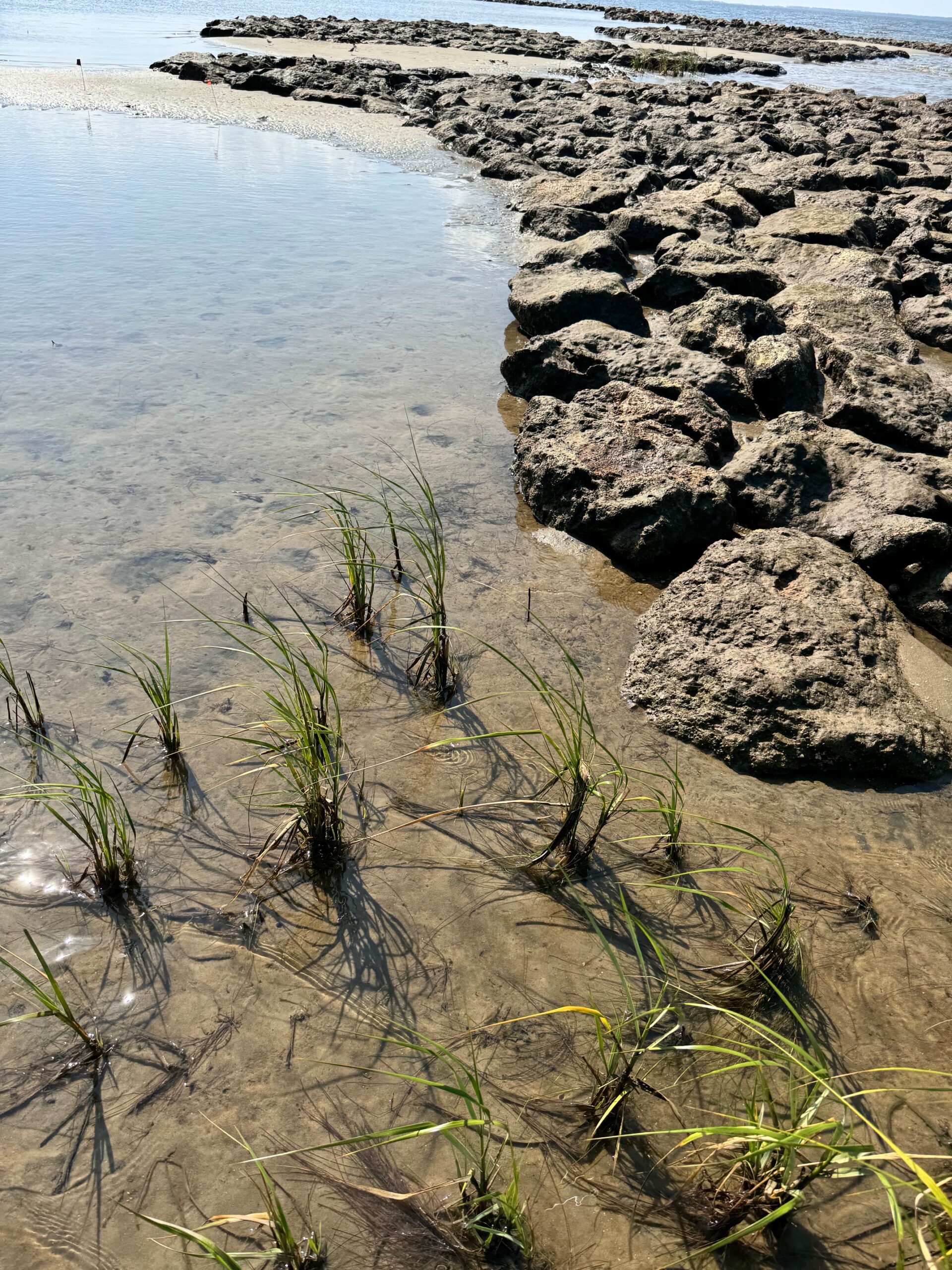
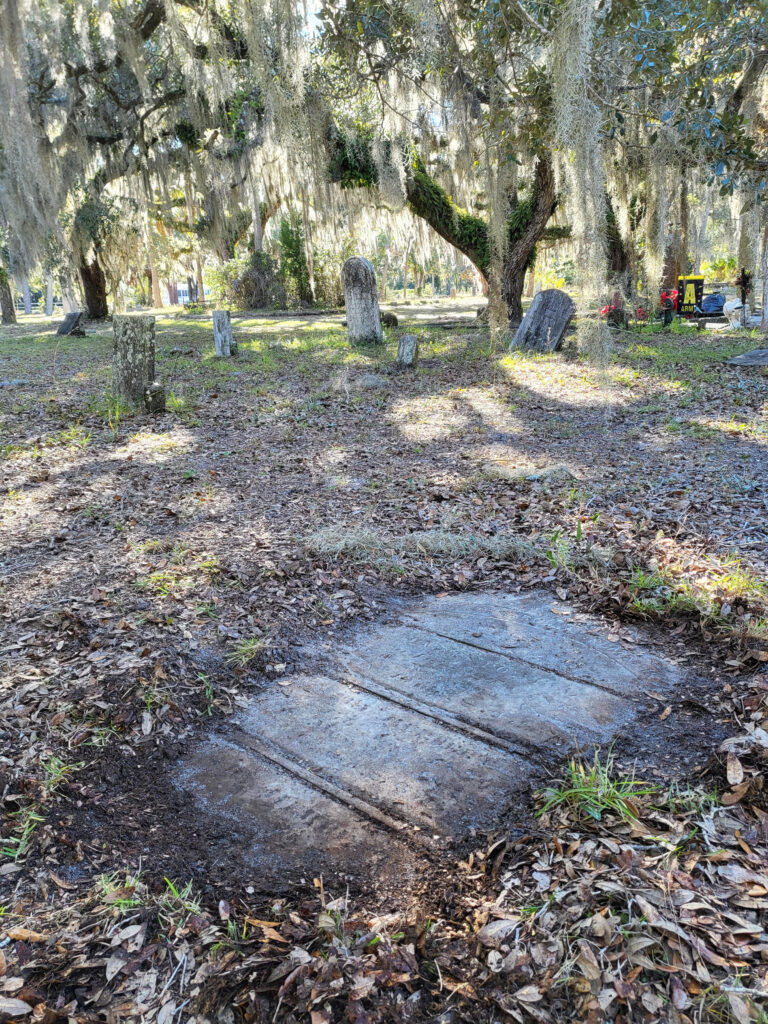


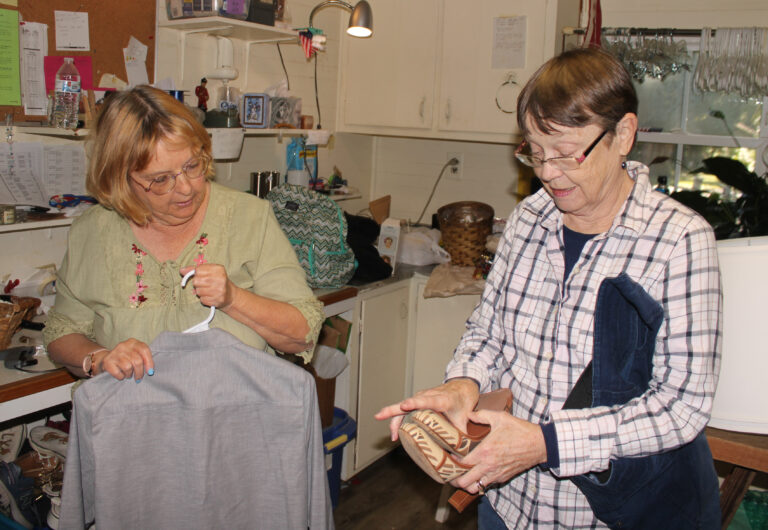
Meet the Editor
David Adlerstein, The Apalachicola Times’ digital editor, started with the news outlet in January 2002 as a reporter.
Prior to then, David Adlerstein began as a newspaperman with a small Boston weekly, after graduating magna cum laude from Brandeis University in Waltham, Massachusetts. He later edited the weekly Bellville Times, and as business reporter for the daily Marion Star, both not far from his hometown of Columbus, Ohio.
In 1995, he moved to South Florida, and worked as a business reporter and editor of Medical Business newspaper. In Jan. 2002, he began with the Apalachicola Times, first as reporter and later as editor, and in Oct. 2020, also began editing the Port St. Joe Star.